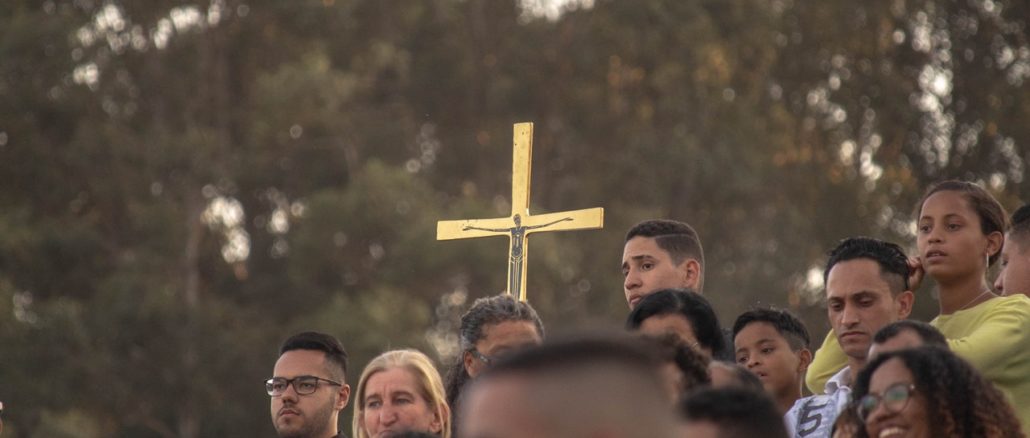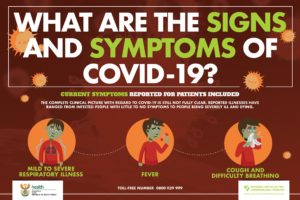
TEASA: GUIDELINES FOR THE OPENING OF CHURCHES
-
Do churches have obligations?
It must be noted that all social gatherings are prohibited under level 3, except for places of worship with 50 people or less and depending on the size of the venue and the church’s resources. It is important for strict health protocols to be adhered to at all times to safeguard the health and lives of congregants during the time of COVID19 and beyond.
It must be stated that this responsibility is shared between the leader of worship center and the member of the congregation who comes to worship. Congregations or churches need to hold each other accountable for a healthy and safe worship environment. It is the responsibility of each church to inform their congregants of the potential risks involved in attending a physical church and to inform them of the options available to enjoy spiritual ministry safely.
Churches are still required to adhere to the specific funerals restrictions for the health and safety of guests. No social events to be hosted, cancel tea/lunch after service to minimise the chances of infection.
under the Disaster Management Act NO.608 of 2020: All entities (private and public) permitted to operate are required to have a designated Covid-19 Compliance Officer (see Sec 4.47(1)(a )
In the church setting the compliance officer/s duties are to oversee the implementation of the church’s plan as well as adherence to the Covid-19 standards of hygiene and health protocols relating in the place of worship.
-
At Level 3, we need to take personal responsibility for our safety and the safety of others by in church and outside church:
1. Stay at home if unwell and seek medical attention if you have flu-like symptoms or have been exposed to a person with such symptoms.
- Avoid crowds and gatherings and avoid and limit unnecessary traveling in order to reduce the risk of transmission and infection.
- Keep a distance of one-and-a-half to two metres from other people.
4. Regularly wash our hands using soap and water for at least 20 seconds or sanitising your hands.
5. Wear a cloth facemask when in public.
6. Clean and sanitise surfaces regularly using disinfectant and maintain good personal and environmental hygiene.
By fulfilling the requirements below the church leadership is assuming the responsibility to protect the lives of their fellow congregants. It is also the church leadership’s responsibility to inform congregants of their responsibility to keep themselves and others safe.
-
Regulations and directive regarding COVID-19 prevention measures in the place of worship
3.1 Standard Operating Procedure (SOP) on equipment, tools, and facility required for safe worship. First prize is for churches to convene a Covid 19 Task Team or utilise existing Health Teams to establish a connection with nearest health facilities and laboratories listed by DOH Referral of church members to Health facilities for referral of affected congregates. Churches are encouraged to invest in referral slips to be used by congregants to take to a healthcare facility when they are showing symptoms.
These are non-negotiable requirements:
- A well ventilated and adequate space for worshiping allowing for spacing of 1.5 to 2 meters.
- Clean running water and soap (preferably liquid soap).
- Spray bottles for hand sanitiser.
- Personal protective equipment such as disposable facemasks, face shield/glass screen, disposable apron, and disposable gloves for the compliance officer and members of the health team at the church e.g. ushers.
- At least two infrared forehead thermometers.
- Disinfectants (1:1000 ppm available chlorine or 70% alcohol) for sanitasation of surfaces etc.
- Disinfectant wipes.
- Paper towels/tissues and closed bins.
- Biohazard waste bag (not household refuse bags) for safe disposal of used materials.
- Keep a detailed attendance register and screening forms for ease of contact tracing.
- Cloth and disposable facemasks.
3.2 Worship practices
- Explore possibility of holding multiple services to comply with numbers allowed to congregate and also to meet the health needs of congregants e.g. separating children from the elderly.
- Where possible continue offering alternative church services such as online services, home visits etc for those who cannot attend physical church or be in a mass gathering due to health concerns.
- Service duration to be capped at two hours.
- Ventilate, clean, and sanitize church hall before each service. Use disinfectant wet wipes to clean frequently touched and used surfaces in-between services.
- Arrange seating allowing for 1.5/2 meters sitting distance apart and use alternative rows. Demarcate the sitting the sitting before the start of each service.
- Thoroughly wash hands using soap under running water or sanitize hands using 70% alcohol based solution before entering church and after the service.
- No socializing, touching of any kind is permitted e.g. no shaking hands and or hugging between congregants/guests.
- Screening of congregants by dedicated health team – complete the screening questionnaire and have temperature taken before entering church etc and those with readings of 38 degrees Celsius and above will be referred to a health facility for further assistance, and if nothing is immediately available, asked to return home for later attention.
- Families to sit together and observe physical distancing with other families/guests.
- Everyone to wear a cloth facemask on arrival, before entering church building, during the service, and up until they leave the premises.
- Church musicians to continually and thoroughly sanitize their equipment during the service.
- Explore new ways of giving/collecting and receiving tithes and offerings to reduce risk of touching in order to comply with social distancing regulations –church collections should be done at the end of the service. This needs to be communicated to congregants beforehand to avoid misunderstandings. Ushers to monitor physical distancing during offering and tithes.
- Continue to suspend Holy Communion if safety cannot be guaranteed e.g. where the use of the chalice for the distribution of wine is practiced. This needs to be communicated to congregants beforehand.
Alternatively:
13.1 Only administer wafers and follow strict hygiene protocols.
13.2 Allow for the priest or designated persons to receive the Holy Communion on behalf of the congregation.
13.3 Allow families to self-administer Holy Communion at home.
13.4 If finances allow procure pre-packed Holy Communion single-use packs.
- Sunday school and Catechism classes are suspended until further notice.
- Practice healing and deliverance ministry without any laying of hands, where this is practiced:
15.1. Ushers to continue assisting members in pre-determined numbers to come for healing and deliverance ministry.
15.2 In instances where there is a manifestation of demons, ushers or to request church members to move away or sit until the ministry is complete.
- No baptism is permissible (adult and children baptism) during this period.
- All hymn books, bibles to be removed from pews:
Readings and hymns to be provided by electronic means where possible or printed in leaflet form.

Frequently asked questions
Q1. What are the considerations regarding COVID-19 for the sick and elderly?
A1. It is recommended that the elderly and sick should stay at home and not attend chuch in person as they are susceptable to fallling ill and they are classified as high risk in church. Pastors and church elders are encouraged to make home visits to the elderly or find creative ways of staying in touch with those who are isolated and vulnerable and to give them spiritual support and also practical support.
Q2. What are the duties of a Coovid-19 compliance officer?
A2. The compliance officer’s duties are to ensure that:
The COVID-19 prevention measures are complied with, health and hygiene protocols are complied with and the workplace plan is complied with.
Q3. What are the symptom screening requirements for churches?
A3. Every church must take measures to screen any congregants at the time they report for church to ascertain whether they show any COVID-19 symptoms, for example fever, cough, sore throat, redness of eyes or shortness of breath or difficulty breathing.
Q4. What are the compliance officer and/ health team screning for?
A4. The World Health Organisation (WHO) advises screening for the following symptoms: body aches, loss of smell or taste, nausea, vomiting, diarrhoea, fatigue, weakness or tiredness or a rash on skin or discoloration of fingers or toes. Every congregant is required to immediately inform the Covid-19 compliance officer or health team if they experience any of the symptoms above while at church. Every congregant must comply with any guidelines issued by the National Department of Health in respect of symptom screening and medical surveillance and testing.
Q5. What must a church do when a congregant presents, or informs the church of, symptoms of COVID-19?
A5. The compliance officer must not permit a congregant to enter the place of worship if the congregant is not screened and if already at church, the compliance officer must immediately isolate the congregant, provide them with an FFP1 surgical mask and arrange for the transport of the congregant to be self-isolated, or to go for a medical examination or testing. The transport of the congregant must not place other congregants or members of the public at risk. The compliance officer must also assess the risk of transmission and disinfect the area accessed by the congregant.
[NR1]You will also have to do further reading of subsection (B) to understand what entails the compliance officer duties
[NR2]Using church letterhead? I think a church letterhead can be usefull in contact tracing